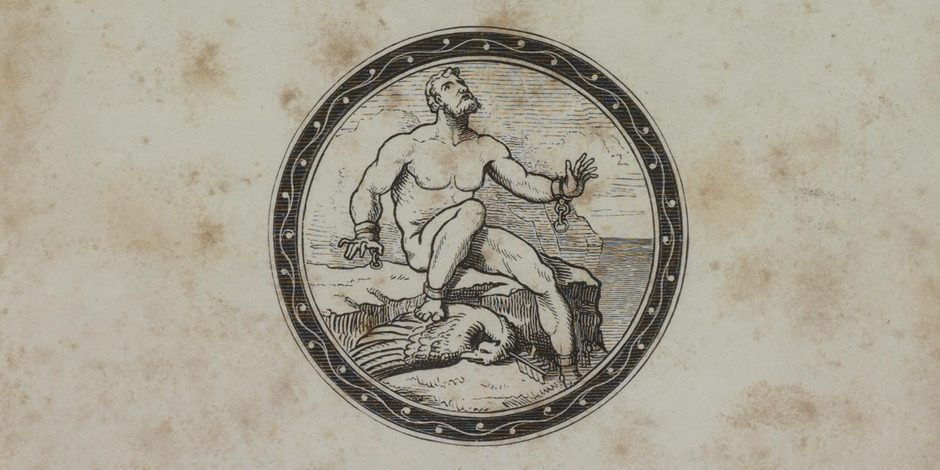Projects of the Klassik Stiftung Weimar are funded by the European Regional Development Fund (ERDF) and the Free State of Thuringia, represented by the State Chancellery of Thuringia, Department of Culture and the Arts.

The Birth of Tragedy
A story about Nietzsche’s debut treatise and how the divine power of music inspired him.
Friedrich Nietzsche’s stint as a professor of classical philology at the University of Basel did not last long. This was not only due to his weak constitution, but also because of his first work published in Leipzig in 1872. In his speculative treatise entitled “The Birth of Tragedy from the Spirit of Music”, the relatively young professor snubbed the conventions of his discipline. Instead of limiting himself to ancient sources, he incorporated ideas from Arthur Schopenhauer and praised the composer Richard Wagner for renewing the concept of tragedy in a total artwork (Gesamtkunstwerk). In comparing the two complementary fundamental forces of the Dionysian and Apollonian, the book exerted a lasting influence on the arts and philosophical cultural criticism. However, its reception among Nietzsche’s colleagues was underwhelming. In his meanwhile notorious review of the book, “Ton und Tendenz” (Sound and Tendency), Ulrich von Wilamowitz-Moellendorff criticised the philosopher and urged him to relinquish his post as professor of philology and follow the example of the god Dionysus:
„let mr. N. keep his word, seize the thyrsos, travel from India to Greece, but may he then descend from the podium from whence he was supposed to teach science; let him gather tigers and panthers about his knees, but not Germany’s philological youth […]“
Ulrich von Wilamowitz-Moellendorff
The “Birth of Tragedy” was Nietzsche’s first book and to this day, is one of his most famous. He produced the handwritten clean copy during 1871. It served as the basis for the layout and print copy in Leipzig. To underscore the perfection of the manuscript and his absolute mastery of its subject, Nietzsche also designed the title page which was not customary in those times. The traced vignette would depict “Prometheus unbound” at whose feet lie the vultures killed by Hercules.
The final woodcut was designed by the Berlin artist Leopold Rau. The reference to the Prometheus tragedy of Aeschylus is evident. From Nietzsche’s point of view, the vignette had an even deeper significance. It played on the Dionysian power of music as one of the central themes of the book.
„What power was it that liberated Prometheus from his vultures and transformed the myth into a vehicle of Dionysian wisdom? It was the Herculean power of music, which having attained its supreme manifestation in tragedy, is able to interpret myth in a new and most profoundly significant way [...].“
Friedrich Nietzsche
We owe Nietzsche’s literary estate to the efforts of his sister Elisabeth Förster-Nietzsche, who after returning from Paraguay collected every obtainable manuscript, letter, record and document of reception produced by or related to her brother. The Nietzsche-Archiv, which she established in her mother’s home in Naumburg in 1894, moved to the Villa Silberblick in Weimar three years later. It was there that Friedrich Nietzsche passed away in August 1900. From then on, his sister devoted herself wholly to cultivating his posthumous fame. Her villa not only became the main location of Nietzsche research, but also home of the worldwide Nietzsche cult.
Friedrich Nietzsche (1844–1900): handwritten print manuscript of “The Birth of Tragedy from the Spirit of Music”, 1871
Cat. no.: GSA 71/3
Provenance: Friedrich Nietzsche (1844–1900)
Collections: Friedrich Nietzsche estate at the Goethe- und Schiller-Archiv (GSA) (manuscript), Nietzsche collection at the Herzogin Anna Amalia Bibliothek (HAAB) (first edition)

